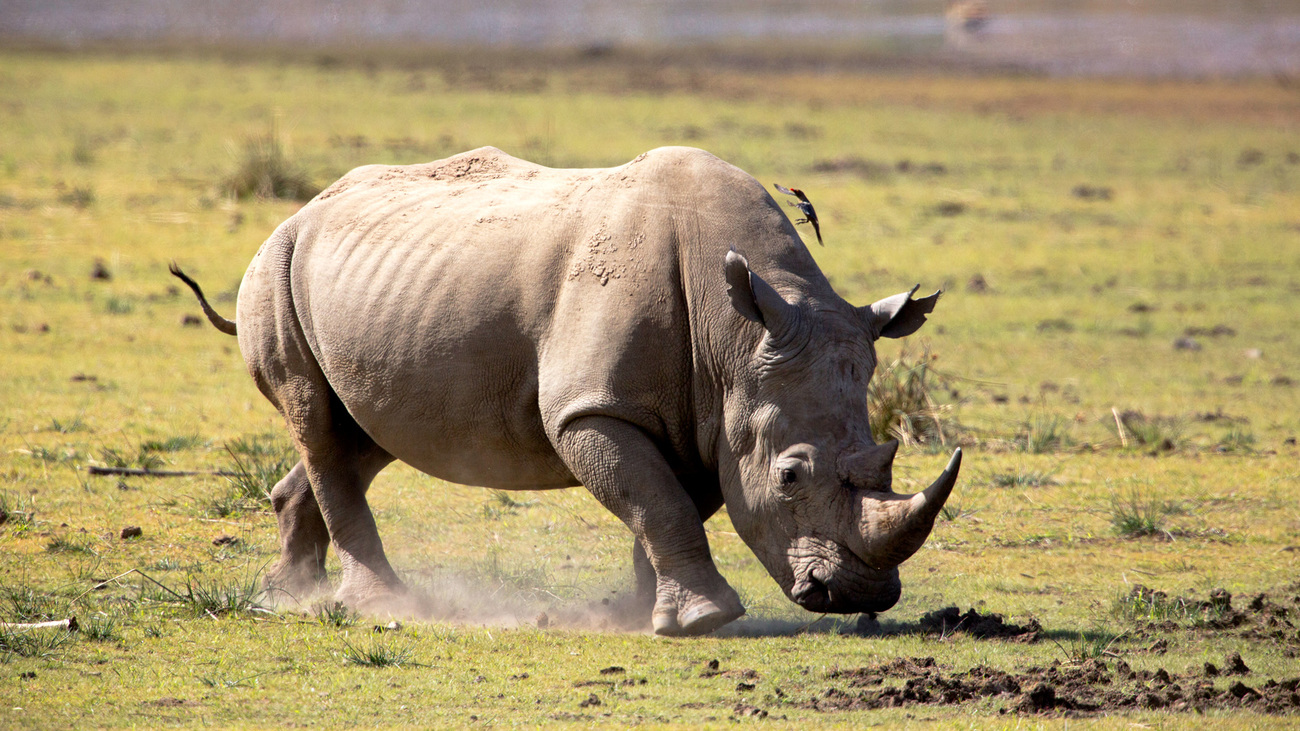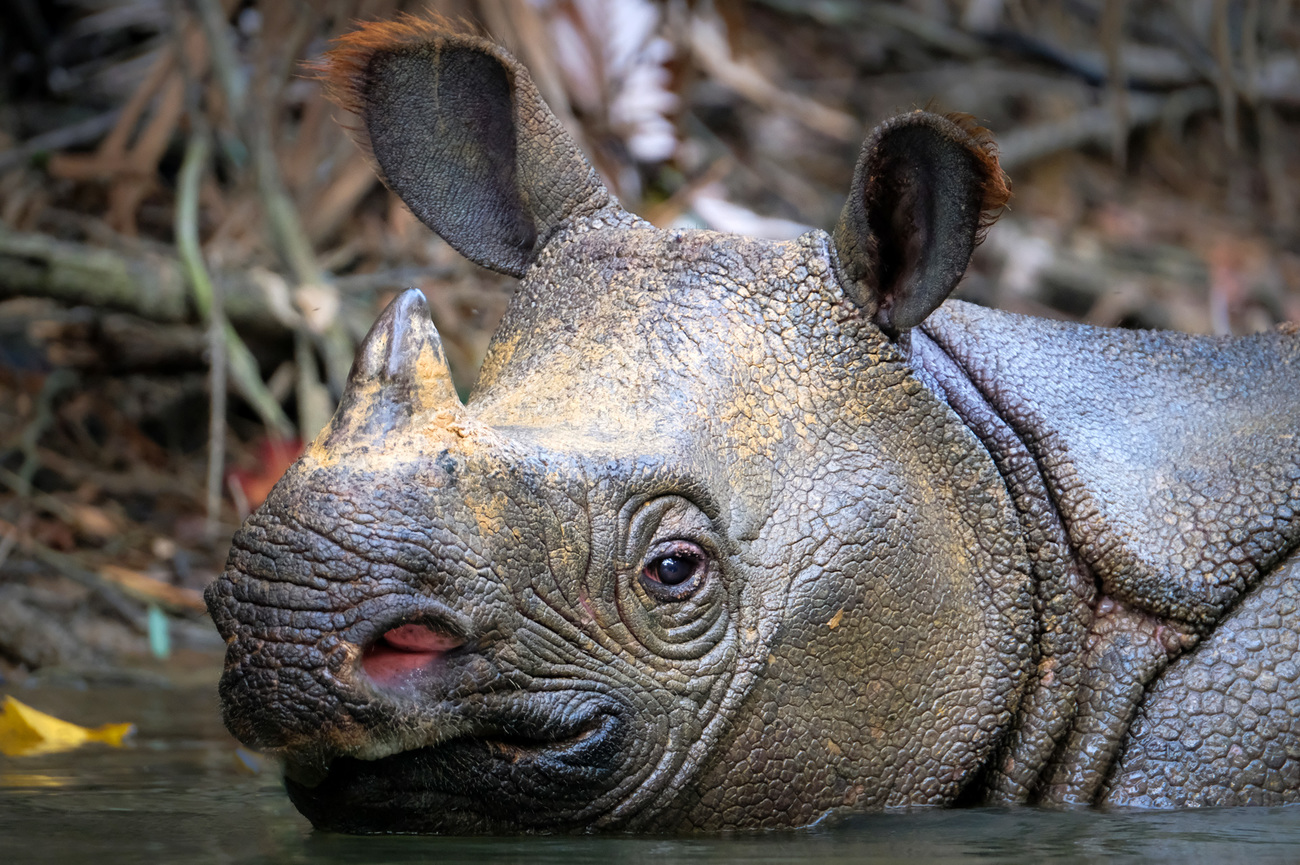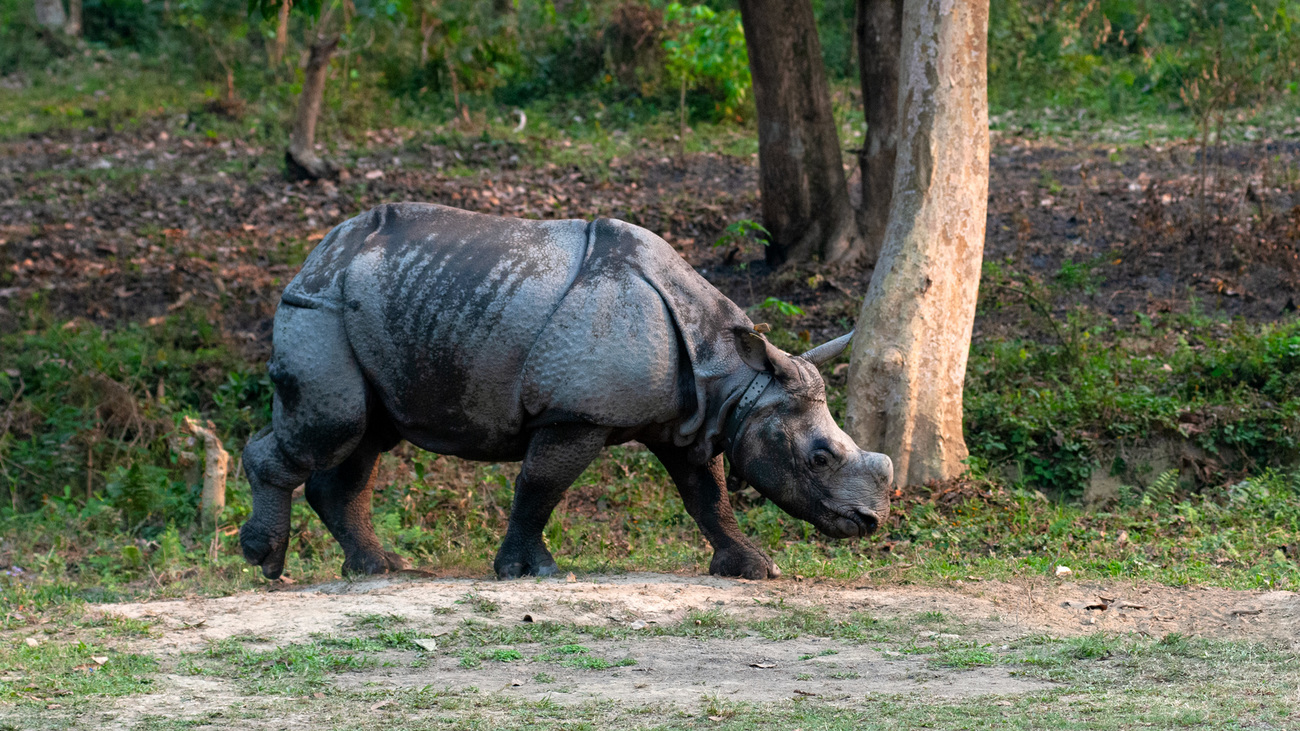Blog
Discover the four layers of the forest—and the animals living in it
Read moreRhino facts: Everything you need to know
Rhinos are the second largest mammals on earth, after elephants. There are five rhino species spread throughout Asia and Africa, and they each play an important role within their ecosystems.

As keystone species and mega-herbivores, rhinos are environmental engineers within their habitats. Rhinos in Africa, for example, create and maintain water holes by rolling in the mud that serve as water sources for many other animals. Rhinos also spread more than 20 kilograms (44 pounds) of dung every day, fertilising plants and dispersing seeds to create food for other herbivores.
Through their movement and eating habits, rhinos also shape their habitat in other ways. As Sumatran rhinos move through the forest, they create small clearings, allowing plant species to grow and giving other wildlife easier access to food sources. In Africa, white rhinos eat over 50 kilograms (110 pounds) of vegetation every day. By keeping the grass short, they support plant species and wildlife that couldn’t survive in long grass.
Rhinos are an essential part of their ecosystems. But with many rhino species considered vulnerable or critically endangered, these animals need our help. Habitat loss and fragmentation, poaching, and climate change all threaten the survival of these majestic mammals. So, IFAW is working hard with partners around the world to reduce human-wildlife conflict, restore habitats, and prevent poachers from killing rhinos and stealing their horns.
There are currently five species of rhinos in the world:
Despite their names, all rhinos—including the black rhino and the white rhino—have grey or brown skin. You can tell the different species apart by their size and the number of horns they have.
Black and white rhinos also have different lip shapes. Black rhinos have a pointed upper lip, which they use to pluck leaves and fruit from branches, while white rhinos have a squared lip, which helps them to graze on grasses.
Of the five species, white rhinos are the largest. They weigh 2,000 to 4,000 kilograms (4,400 to 5,300 pounds) and are the fourth largest land mammals on Earth, after the three species of elephants.

Two rhino species live in Africa (the white rhino and the black rhino) and three live in Asia (the greater one-horned rhino, Sumatran rhino, and Javan rhino).
White rhinos live in the grasslands, shrublands, and savannahs of Africa. The southern white rhino is a subspecies found in South Africa, Namibia, Kenya, and Zimbabwe. There are only two critically endangered northern white rhinos left but, historically, this subspecies lived in northern African countries.
Black rhinos live in a range of habitats. They can be found in semi-desert savannahs, forests, woodlands, and wetlands. They live in small areas of Angola, Kenya, Mozambique, Namibia, South Africa, Tanzania, and Zimbabwe. They have also been reintroduced to Botswana, Eswatini, Malawi, Rwanda, and Zambia.
Sumatran rhinos live in Borneo and Sumatra, in dense forests and marshes. Javan rhinos can also be found on the islands of Borneo and Sumatra, as well as the island of Java, India, Bangladesh, and Vietnam.
The greater one-horned rhino used to roam the grasslands of northern India and Nepal. Most now live in reserves within these countries.
Most rhinos are solitary. However, the white rhino lives in groups of up to ten that usually consist of a female and her calves or adult females.
Fun fact: Rhinos once lived in Europe, and early Europeans depicted rhinos in cave paintings.
Rhinos are herbivores, which means they eat plants. They tend to feed at night or during the cooler hours of the day.
A rhino’s habitat influences which plants it eats. White rhinos graze on grass, while black rhinos eat succulent plants and leaves. Sumatran rhinos eat a variety of available plants, and Javan rhinos prefer moist plants found in lowlands with plenty of water, though they are also the most adaptable eaters and will eat over 100 different plant species. Greater one-horned rhinos graze on grasses and eat plants close to water.

Rhino horns are made of keratin, a fibrous protein found in hair, fingernails, scales, and other parts of vertebrate animals. Elephant tusks are made of ivory, which consists of dentine, a calcified body tissue also found in human teeth.
Like fingernails, horns grow continuously throughout a rhino’s life and can be trimmed without causing pain. White, black, and Sumatran rhinos have two horns—a small horn in the back and a much larger one in the front. Javan and Indian rhinos each only have one horn.
Male rhinos, especially the African species, use their horns as a show of strength and to express dominance. Those with the largest horns are seen as desirable mates by females. When presiding over his territory, a dominant male rhino will scare off other males by lowering his head and charging them with his horn.
Rhinos can also use their horns to dig for food and unearth small plants with edible roots. The white rhino will do this when conditions are dry and there isn’t enough grass to eat.
Male rhinos also sometimes use their horns to move their dung into a pile, known as a midden, to mark their territory.
Rhinos can be protective of their young, but they are rarely aggressive if unprovoked. Rhinos prefer to roam unhindered and undisturbed. However, if they perceive a threat, they may defend themselves by charging. Female rhinos are often very protective of their calves, which means they are dangerous to encounter in the wild.
A young rhino is called a calf, while an adult female is known as a cow and a male is a bull. Together, a group of rhinos is called a ‘crash’.
Female rhinos can have calves once they are six years old. They give birth to one calf at a time and are pregnant for 16 months. Calves will stay with their mothers for up to four years. After the birth of a calf, a female won’t get pregnant again for another two to four years. In the wild, rhinos live for around 40 to 55 years.
A notable difference between black and white rhinos is apparent when a calf is present. If threatened, black rhino calves follow their mothers closely. This is due to their habitat preference—they spend a significant amount of time in thick bush, through which the mother clears a path. White rhino calves, on the other hand, tend to stand in front of their mothers if threatened. This is because they live mostly in plains—staying in front of their mother means she can keep a close eye on them.
The weight of a rhino calf varies by species. White rhino calves weigh around 50 kilograms (110 pounds) when they’re born. Those calves then grow up to be some of the largest animals in the world.
When rhinos are young, they are vulnerable to predators like crocodiles, big cats, and wild dogs. Adult rhinos have very few wild predators, but Nile crocodiles will sometimes try to attack rhinos while they are drinking.
Humans are the most dangerous predator to rhinos—poaching and habitat destruction have endangered many rhino populations.
Rhinos have a natural predator alarm: Oxpecker birds often perch on rhinos’ backs to eat parasitic insects that live in their thick skin. These birds let out a loud cry if they spot potential danger, which also lets the rhinos know that danger could be nearby.

Rhinos are endangered by poaching and habitat loss.
Some people falsely believe that rhino horns have medicinal powers to cure different ailments. Horns are also used as a hangover cure and party drug. This demand drives an illegal market for rhino horns, which in turn leads to poaching. In Africa, poaching gangs travel by helicopter, searching for rhinos. They then shoot them with guns or tranquiliser darts and remove their horns with chainsaws.
Habitat loss is another major problem for rhinos. As human populations, urban areas, and the supporting infrastructure grow, more rhino habitat is lost. This affects their access to food, health, and reproduction habits as they no longer have the space to roam and mate.
All rhinos face these issues. But some threats are specific to each species. For example, Sumatran rhinos are threatened by palm oil production, which is a significant driver of habitat loss.
Javan rhinos are threatened by a disease called haemorrhagic septicaemia (HS), which they caught when a population of Javan rhinos was introduced to Ujung Kulon National Park. Invasive plants are also crowding out the plants that Javan rhinos eat.
Here are the population numbers for each rhino species in 2024:

IFAW is working to protect rhinos around the world.
With our partner Wildlife Trust of India (WTI), we rescue and rehabilitate rhino calves near Kaziranga National Park, who are often impacted by flooding. The team releases the rhinos into Manas National Park to restore their population in this area. We’ve also worked with WTI to restore the landscape and expand protections for the land. Conservation efforts have brought Indian rhino numbers in Manas from just 200 to 3,500.
In addition, we support rangers who work to protect rhinos in Zambia, Malawi, and Kenya. Rangers help prevent wildlife crime and human-wildlife conflict, both issues that impact rhino populations.
At a policy and advocacy level, we work to reduce demand for rhino horn products and ensure markets remain closed. Through the Coalition to End Wildlife Trafficking Online, we work with online marketplaces to take down listings of illegal wildlife products.
Every problem has a solution, every solution needs support.
The problems we face are urgent, complicated, and resistant to change. Real solutions demand creativity, hard work and involvement from people like you.
Unfortunately, the browser you use is outdated and does not allow you to display the site correctly. Please install any of the modern browsers, for example:
Google Chrome Firefox Safari